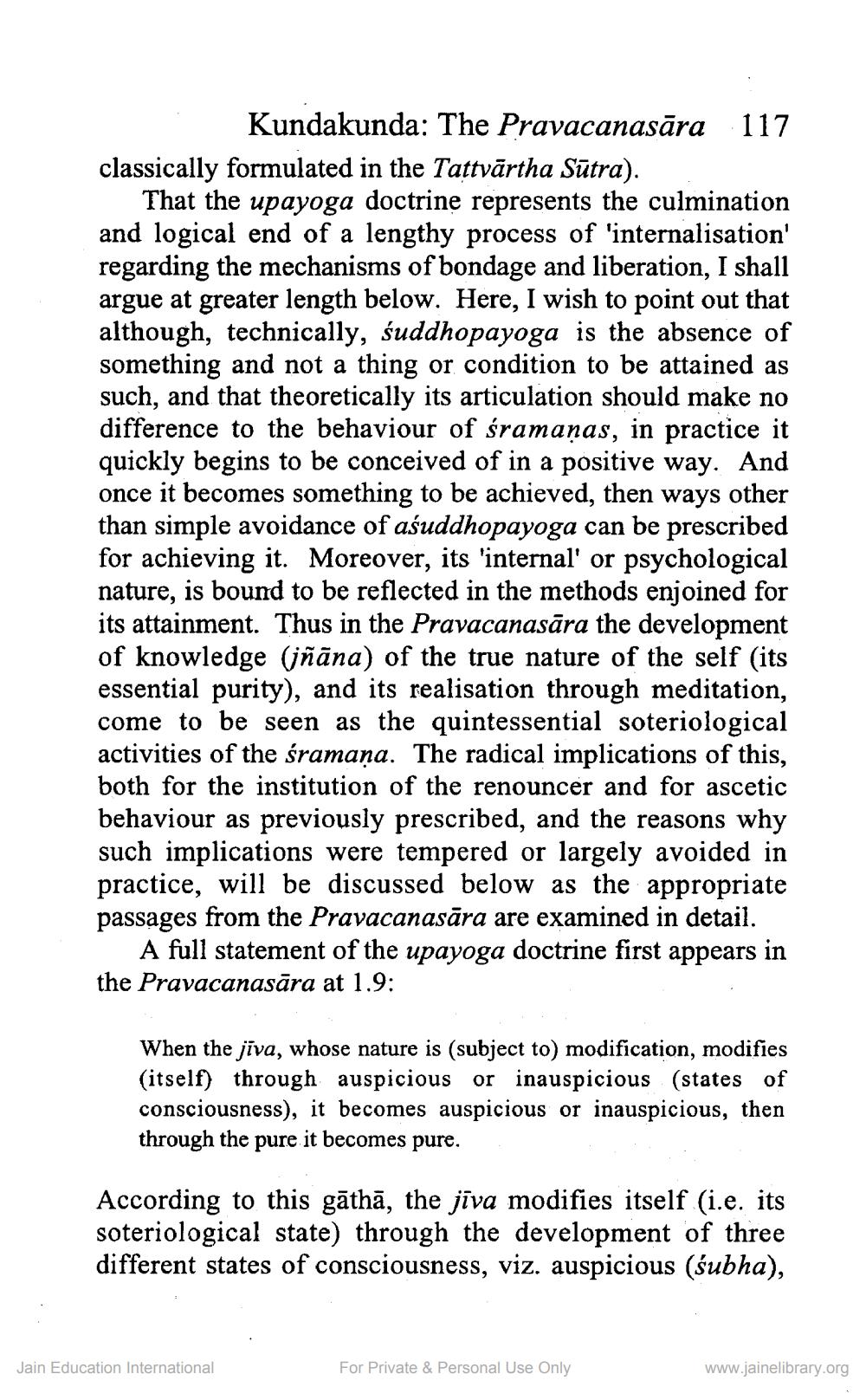________________
Kundakunda: The Pravacanasāra 117 classically formulated in the Tattvārtha Sūtra).
That the upayoga doctrine represents the culmination and logical end of a lengthy process of 'internalisation' regarding the mechanisms of bondage and liberation, I shall argue at greater length below. Here, I wish to point out that although, technically, śuddhopayoga is the absence of something and not a thing or condition to be attained as such, and that theoretically its articulation should make no difference to the behaviour of śramaņas, in practice it quickly begins to be conceived of in a positive way. And once it becomes something to be achieved, then ways other than simple avoidance of aśuddhopayoga can be prescribed for achieving it. Moreover, its internal' or psychological nature, is bound to be reflected in the methods enjoined for its attainment. Thus in the Pravacanasāra the development of knowledge (jñāna) of the true nature of the self its essential purity), and its realisation through meditation, come to be seen as the quintessential soteriological activities of the śramaņa. The radical implications of this, both for the institution of the renouncer and for ascetic behaviour as previously prescribed, and the reasons why such implications were tempered or largely avoided in practice, will be discussed below as the appropriate passages from the Pravacanasāra are examined in detail.
A full statement of the upayoga doctrine first appears in the Pravacanasāra at 1.9:
When the jīva, whose nature is (subject to) modification, modifies (itself) through auspicious or inauspicious (states of consciousness), it becomes auspicious or inauspicious, then through the pure it becomes pure.
According to this gāthā, the jīva modifies itself (i.e. its soteriological state) through the development of three different states of consciousness, viz. auspicious (śubha),
Jain Education International
For Private & Personal Use Only
www.jainelibrary.org




